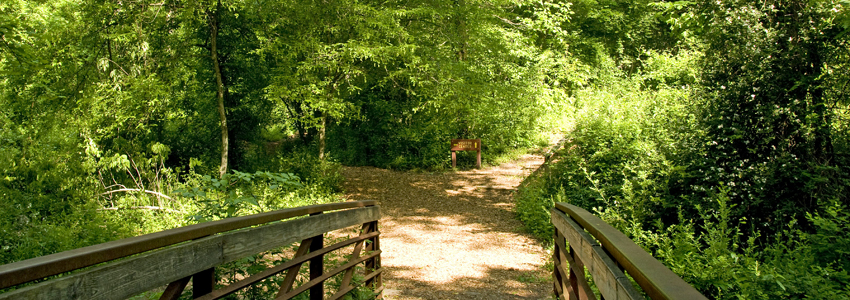Alert:


The park is in the Chesapeake Bay watershed. It is drained by approximately five streams which range from first to third orders. Big Rocky Run, Walney Creek, and Round Lick Run are the primary drainages. Park staff monitor the biological indicators of Walney Creek and Big Rocky Run to determine their ecological health. The Walney Creek watershed is entirely in the park and is relatively free from human disturbance. It is a non-impaired, ecologically healthy stream that supports a variety of sensitive species at different trophic levels. Big Rocky Run flows east to west through the park’s southern portion and is a moderately impaired stream. Although it supports a high number of fish species, the variety and number of macroinvertebrate organisms are few.
Physical characteristics and local land use affect a stream’s ecological health. Development in the Big Rocky Run watershed has impacted the physical characteristics of the habitat. During periods of heavy rain and snowmelt, storm water runoff increases water flow. That causes bank erosion, channel deepening and widening, silt deposition, and temperature fluctuation. A chemical monitoring program monitors potential nutrient loading from non-point pollution sources for both streams. Riparian restoration projects are being considered to increase the overall health of Big Rocky Run.
Contrasting sharply with the adjacent oak/hickory forest, the park’s meadows provide grass-dominant and forest edge habitats. The meadows are in the park’s north along a gas line easement and adjacent to the Cabell’s Mill/Middlegate complex.
In grass-dominant ecosystems, grasses provide a framework on which plant and animal communities are built. The meadow grasses consist of fescue, bluestem, Indian, Eastern gamma, switch, and purple top. Various species of wildflowers bloom from early spring to late fall. Virginia pine and black locust trees stand out in some areas amidst the grasses and wildflowers.
The Middlegate meadow is managed through prescribed burns and relief cuttings that stimulate grass and wildflower growth, reduce the number of non-native plant species, and eliminate potential fuel to prevent uncontrolled fires.
Walney Pond is a one-acre, man-made containment pond that was excavated in the 1950s. For many years, it was a local fishing hole and ice skating venue. By the early 1990s, the pond filled with sediment.
The pond was drained as part of a sewer line replacement project in 1995. At that time, the Park Authority removed sediment, re-graded and reshaped the pond features. The pond is now larger and deeper. Maximum depth is 13 feet.
Native aquatic and emergent plants, shrubs, and trees have been planted at Walney Pond. A marsh-like setting exists in its shallow end. Largemouth bass, channel catfish, and sunfish have been restocked. Special features near the pond include a picnic shelter, a boardwalk, two deck platforms, nest boxes, and informational and interpretive signs.
The pond’s main source of water is surface runoff from a housing development adjacent to the park. There are concerns that excessive nutrient loads from lawn fertilizer contributed to heavy algal and submerged aquatic vegetation growth in the pond in the late 1990s. Park staff has taken steps in recent years to improve the pond’s overall health.
With periodic renovations, it is hoped that Walney Pond will continue to provide wildlife habitat, environmental education, recreation, and landscape beauty.
White-tail deer (Odocoileus virginianus) are one of the most common and graceful native wildlife species in Virginia. However, the deer population in Northern Virginia has grown far beyond what our remaining native habitats can sustain. This is partly due to the abundance of food, including plants in our suburban yards.
Many parks, including Ellanor C. Lawrence, have little or no native vegetation growing below six feet. Deer affect the ability of forests to naturally regenerate. Deer also allow non-native invasive species to gain the upper hand by removing their competition. Deer do not eat non-native invasive species. Severe damage to the forest understory has a long-term effect on native plant communities and the wildlife species that depend on them. A healthy forest structure is associated with increased biodiversity, which has been shown to benefit public health and the enjoyment of nature.
